To support you delivering DL+ to your students, we have provided a brief overview of each module within the tool. DL+ is suitable for students aged 10–14 years, however we have identified the modules best suited to the age groups within that range below. If you have any further questions regarding the best way to teach DL+, please do not hesitate to contact your eSmart Advisor.
On this page:
Synopsis: Supports students to understand the importance of balancing their technology use with other things in their life and know how to achieve balance through cognitive self-regulation and the application of strategies.
Student Outcomes:


Synopsis: Supports students to understand the many types of cyber risks (e.g., cyberbullying) and how kindness can be practiced helping create a positive and supportive online community. Students know the strategies to deal with cyber risks as they encounter them, and know how to behave like an upstander to help others.
Student Outcomes:
Synopsis: Supports students to understand the attributes or ‘red flags’ of a cyber threat (particularly phishing scams), and know the strategies to identify, deal with, report and remain vigilant to cyber threats.
Student Outcomes:
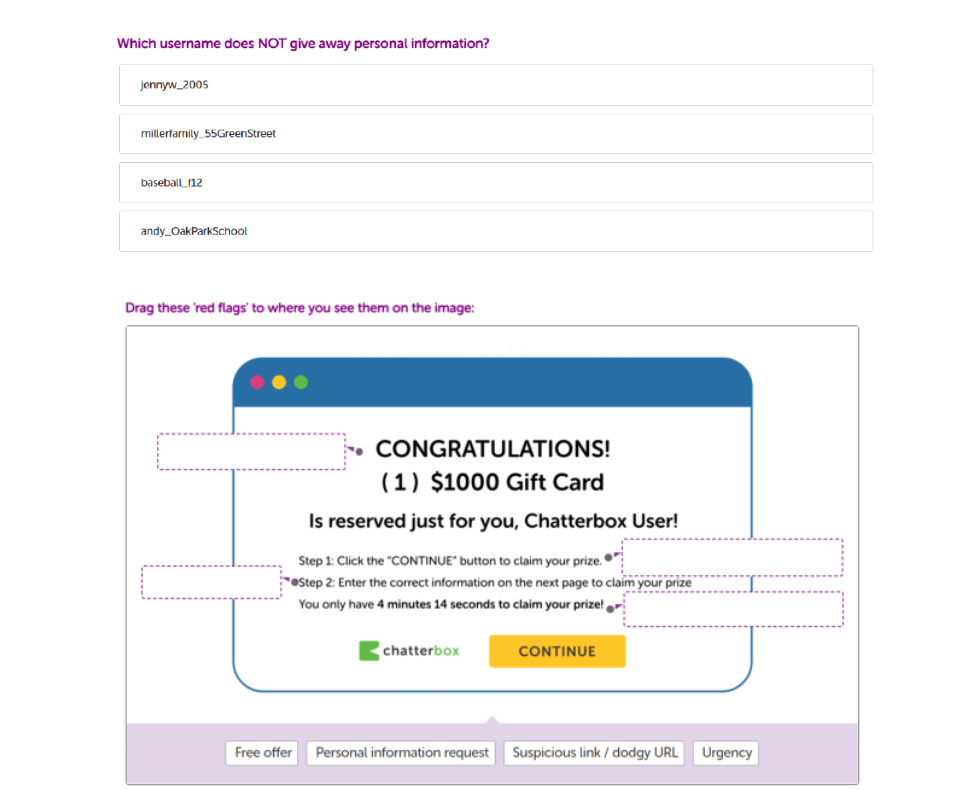
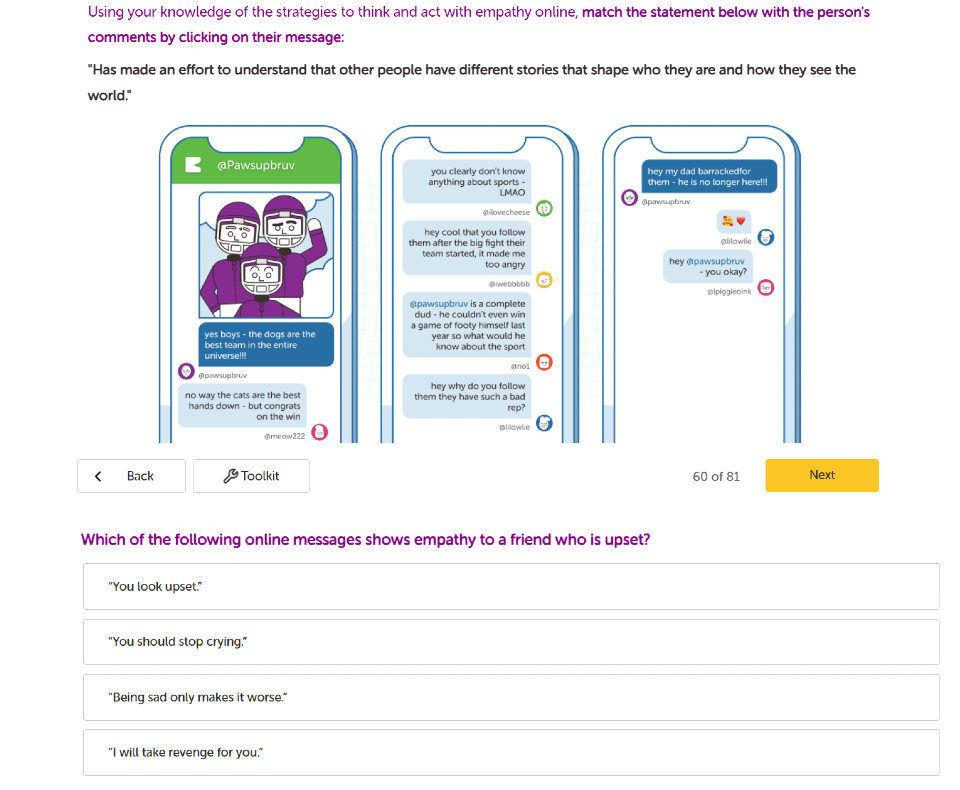
Synopsis: Supports students to understand what empathy is and why it is important. Students learn about the challenge of online disinhibition and the strategies to demonstrate empathy online.
Student Outcomes:
Synopsis: Supports students to understand the connection between how technology is designed and their ability to achieve a balanced and healthy use of technology. Students can use cognitive self-regulation and apply strategies to overcome the challenges presented by the attention economy.
Student Outcomes:
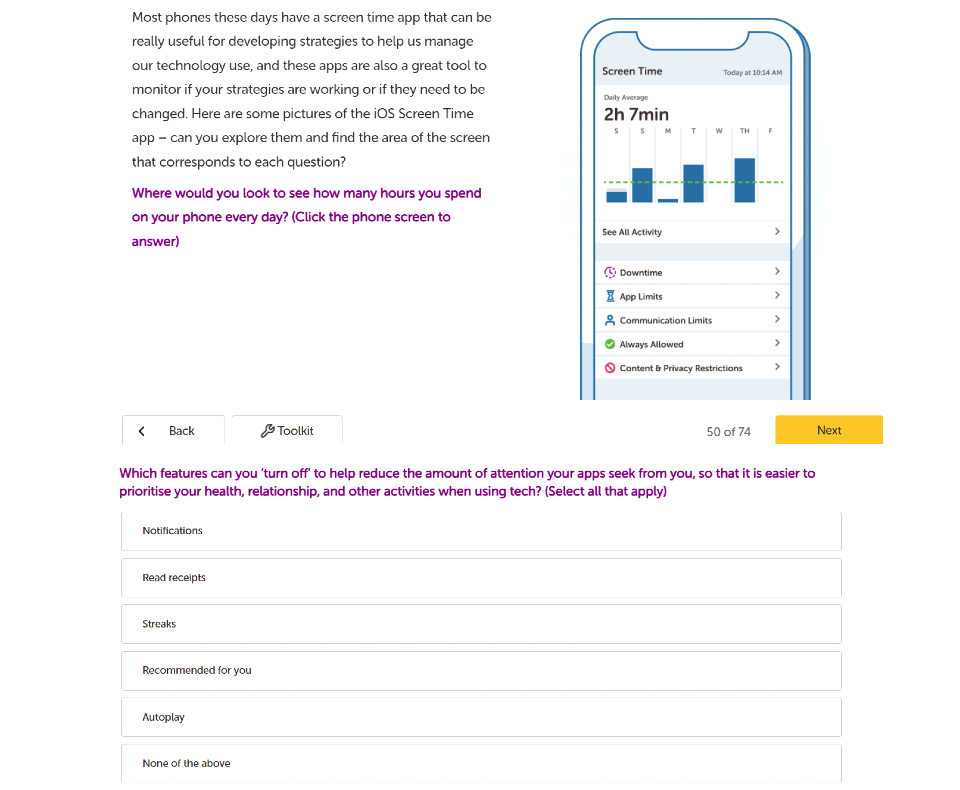
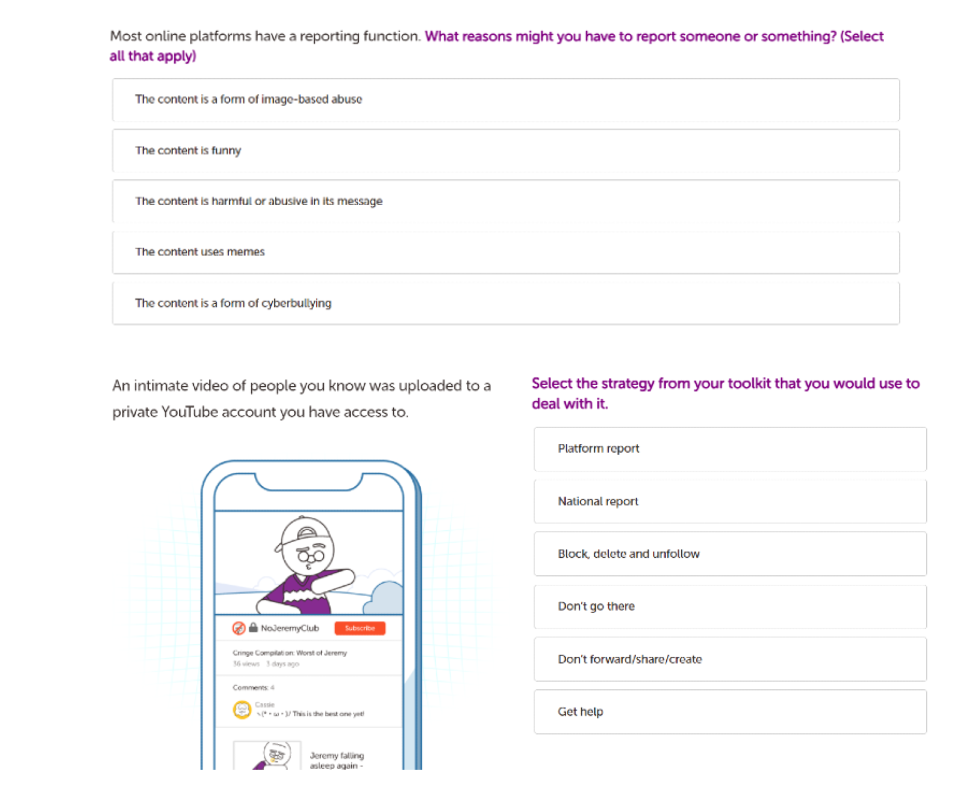
Synopsis: Supports students to understand what hateful and/or discriminatory content and image-based abuse are. Students understand how to enact kindness in dealing with harmful content.
Student outcomes:
Synopsis: Supports students to understand how to practice good network cyber security by exploring the Internet of things (IoT). Students will learn how IoT works, including the benefits and risks it presents, and how to stay safe when using IoT devices.
Student Outcomes:
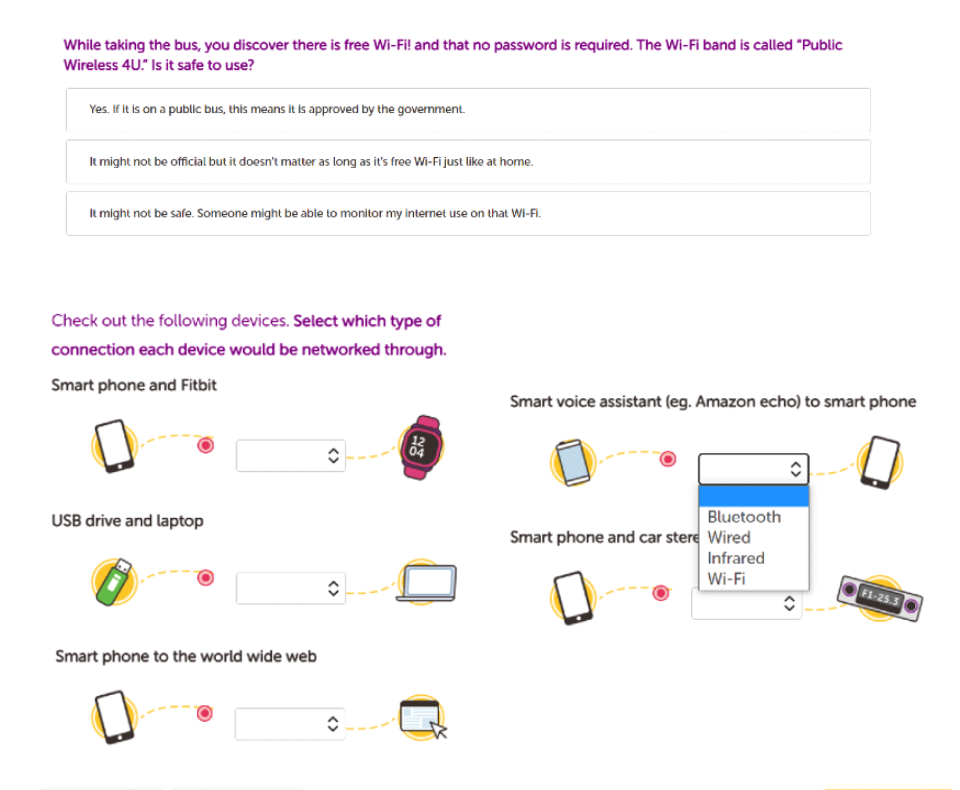
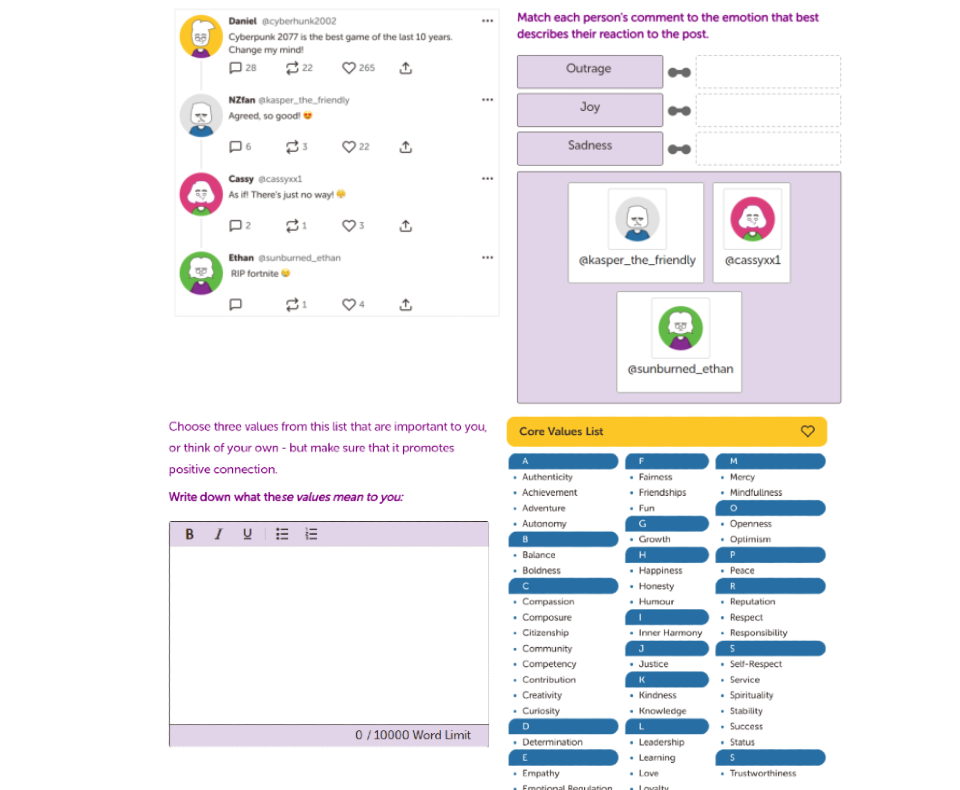
Synopsis: Supports students to understand the connections between their experience with technology, their emotions, their behaviours and their values. Students develop strategies to regulate their emotions when using technology, enabling them to act in a way that best represents prosocial values.
Student Outcomes:
The following resources are available within the DL+ portal and will assist and support you to deliver the teachings available with each module in your classroom. You can access these resources once you are logged in to DL+. If you require any assistance in accessing these resources, please reach out to your eSmart Advisor.
The classroom connection resource is available for teachers to implement in the classroom before, during and after the student interacts with the DL+ program on their device. This resource will assist to cement learnings within each module.
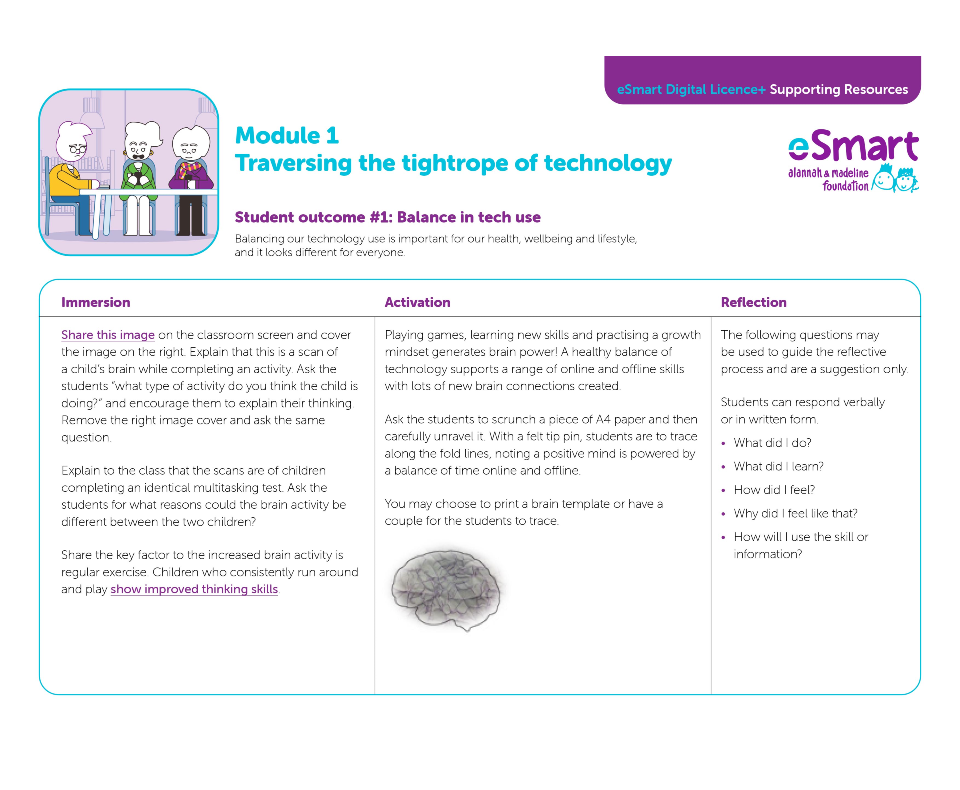

Feel confident that you understand and are supported in knowing the messaging and learnings delivered in DL+ by accessing this our Teach Professional Readings.
Students can use this resource to share their learnings with their parent, grandparent or carer to cement learning and to share their knowledge with their family.


Access this resource to understand how each of the three student outcomes have been aligned to the capabilities of the Australian curriculum.